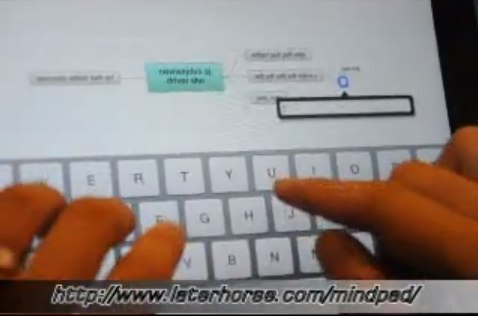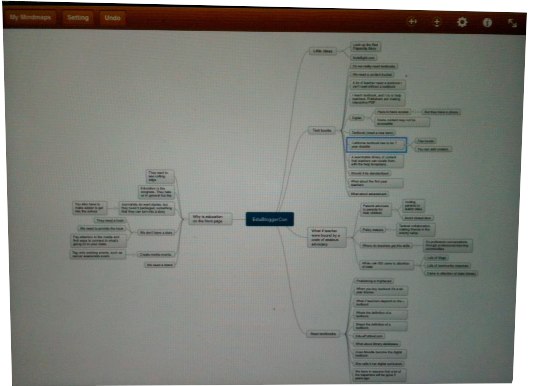Quite a few people have commented on the note files that I have been sharing from the ISTE 2011 conference in Philadelphia. So I thought I would share some details about my note-taking process.
First of all, concept maps seem a logical way to take notes for me. They do not, by nature, expect complete sentences, but do carry a visual syntax of relationship, which is easily editable during less pertinent moments of a presentation or workshop.
The challenge has been to find a tool whose interface is simple enough for quick work, rather than just for the slower and more deliberate idea mapping, for which most concept mapping tools are designed.
I’ve used this technique for years on laptop settling on XMind, an open source product that is free, provides cloud space for sharing, and is cross-platform (Mac OS, Windows, & Linux). In February of 2010, XMind’s blog mentioned plans to develop an iPad version, but none exists at this time.
However, there is a plethora of other mind mapping tools available for the iPad, each with its own strengths and weaknesses. For a long time, my preference was SimpleMind. But its freeform functionality, though highly effective in some circumstances, requires attention to maintaining an practical flow of ideas.
I finally settled on Mindo, which is the app I used at ISTE11. It’s main power is the ease of use. When entering a list of items, I merely type the item name (I prefer to thumb on my iPad) and then touch [Next]. It starts another sibling box that fills as I continue to type. I can also start a new sibling item by double-touching just above or below and existing idea box and a new child item by double-touching to the right of an existing box.
Another huge benefit of Mindo for me is the fact that it will export to Dropbox in a variety formats — including xmind. So I can continue to work on maps on my laptop and vica versa. Other export formats include:
 PNG – An image format which is what I typically use to share my notes at a conference.
PNG – An image format which is what I typically use to share my notes at a conference.- PDF – Perhaps another logical format to use at conferences, but I haven’t tried it yet.
- TXT – In outline format and coded in HTML.
- OPML – Obviously a meta data markup language.
- MMAP – Not sure about this one
- FREEMIND – Possibly the most used open source mindmapping format. Most tools will export as FREEMIND
- MPAD – The native Mindo format
Click the image to the right and above for a video of Mindo in action.


Hi David, Nice post, thanks for sharing your workflow.
Not usre if you’ve come across it, but I’ve been using an iPad app called iThoughtsHD to do more or less the same thing, and I’m likewise finding that mindmaps are a nice way to take notes.
iThoughtsHD (and the iPhone version, iThoughts) also exports to a wide selection of formats, including Freemind, Novamind, XMind, MindManager, ConceptDraw, to name just a few, as well as standards like OPML, PDF, Webdav, Dropbox, box.net, and of course email. It also has a wifi transfer mode too, so you can point your laptop browser at a supplied IP address and access the files on the iPad directly through a web interface. Pretty useful!
Anyway, thanks for the post and it was great to bump into you at ISTE last week and have a chat.
Cheers
Chris
Chris, great to see you at the conference. I have used iThoughtsHD and simply do not remember why I settled on Mindo. May have been a personal preference regarding interface. Wish we’d had more time to talk. ISTE is the land of unfinished conversations.
I used the Popplet app with my iPad to take notes during my last semester of grad school. It was so beneficial for me to organize my thought immediately during lecture and then have it to reference later. I honestly think I had to study so much less because I didn’t have to reorganize the notes.